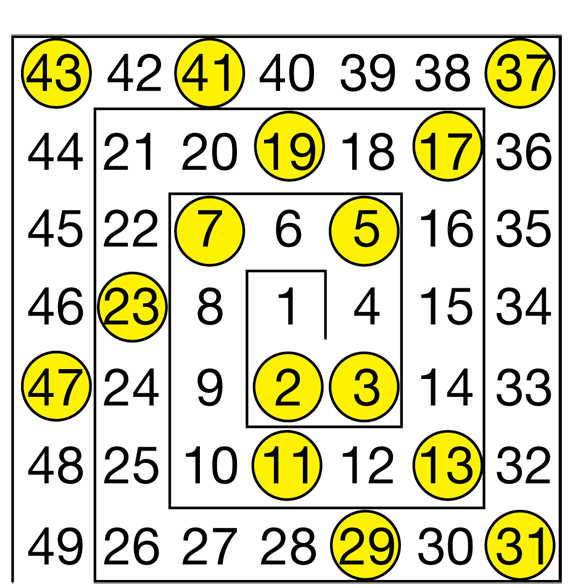Sifting for Primes
Est. Class Sessions: 1–2Extensions
The exploration of prime numbers has been an area of great interest among mathematicians from the time of Eratosthenes to the present day. Mathematicians continue to search for larger prime numbers and, more importantly, for patterns that can help predict where to find them.
Discoveries about prime numbers—past and present—provide opportunities for further exploration into this topic with your students. Ask students to pick one of these activities for further study. You may have students work individually or in groups.
- Continue the Sieve of Eratosthenes to find all of the prime numbers up to 500 (or 1000) and describe the process you used. Show your sieve, describe any patterns you found, and explain anything you did to make finding primes easier.
- Make a Prime Number Spiral (first discovered by Stanislaw M. Ulam in 1963) for numbers from 1 to 200 and describe the patterns you see in the locations of the prime numbers. Then do some research about the Prime Number Spiral and compare the discoveries of mathematicians to your own. A Prime Number Spiral is built by arranging the positive integers in a spiral as shown in Figure 2, and circling all the prime numbers.
- Find out what is the largest known prime number. Write a newspaper article about the search for the largest prime number and the Great Internet Mersenne Prime Search (GIMPS).
- Explore how prime numbers are used for the reading and writing of secret codes (cryptography). Do some research and write an “intelligence report” about prime numbers and codes.












